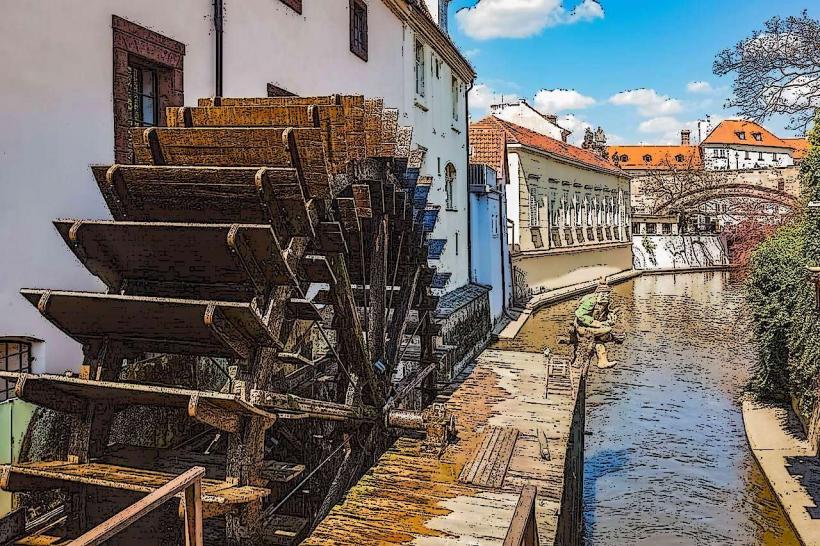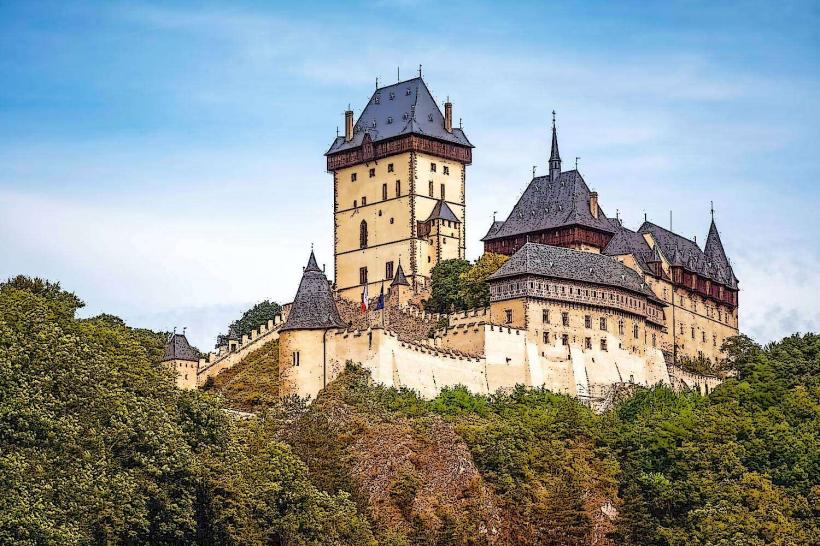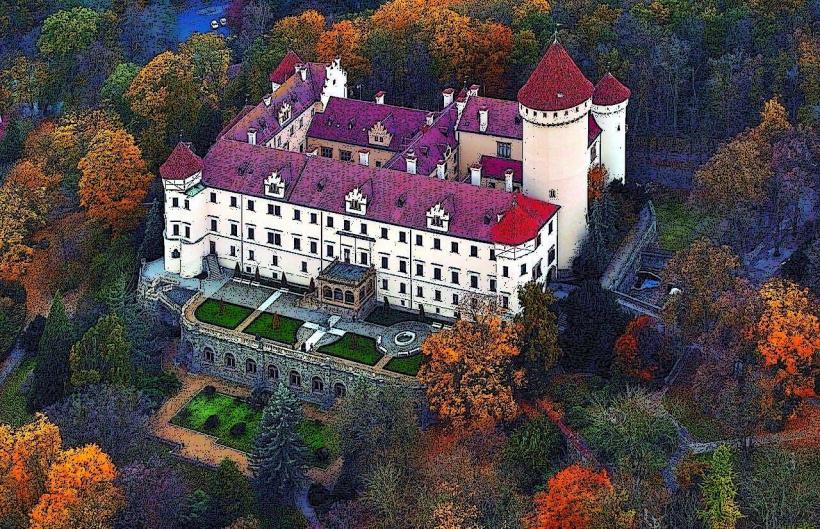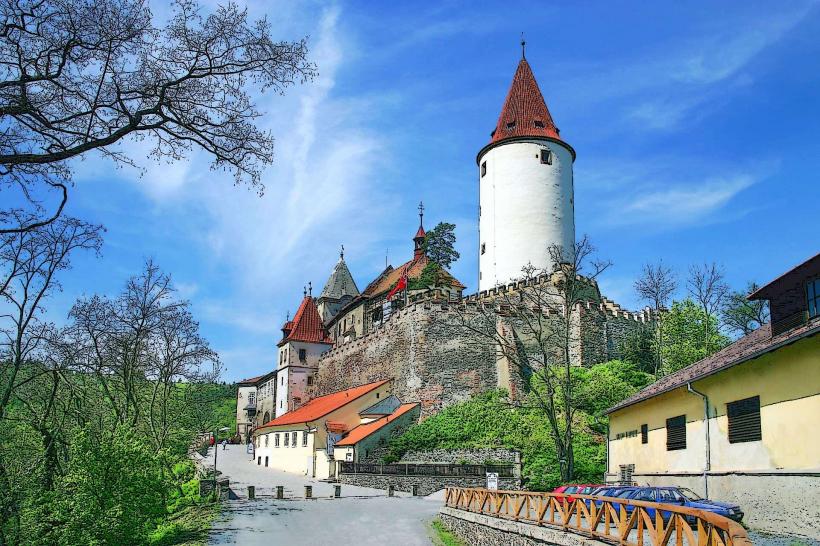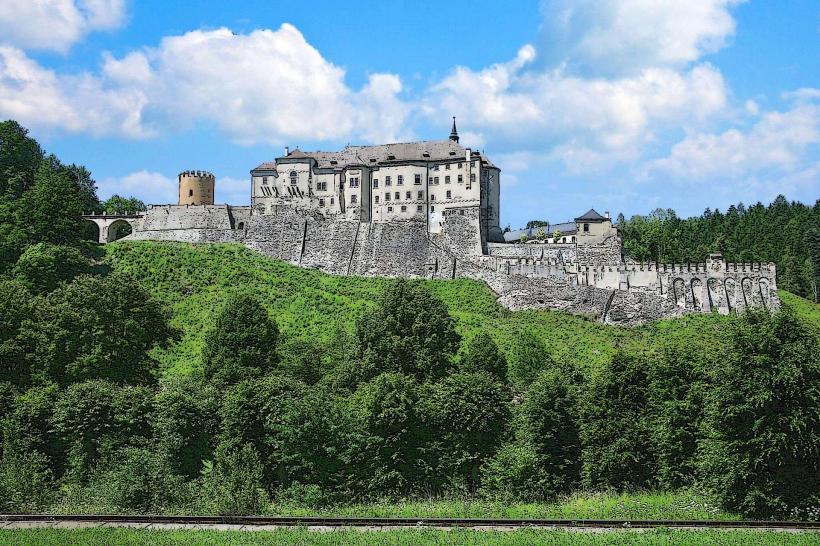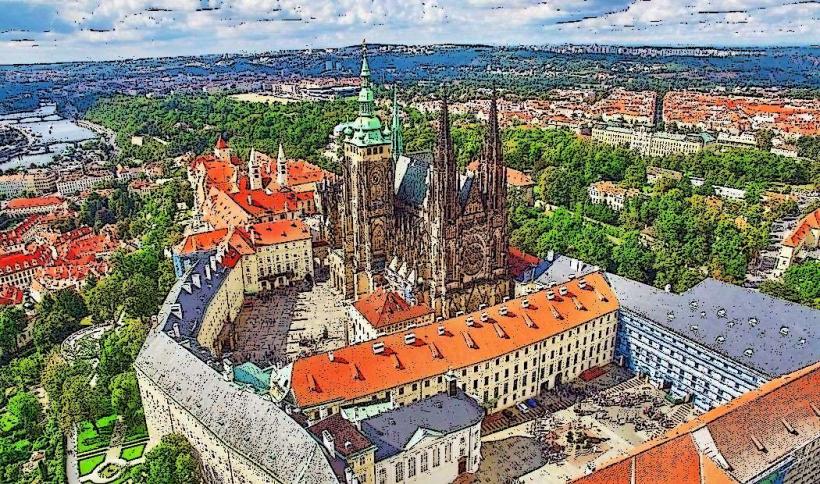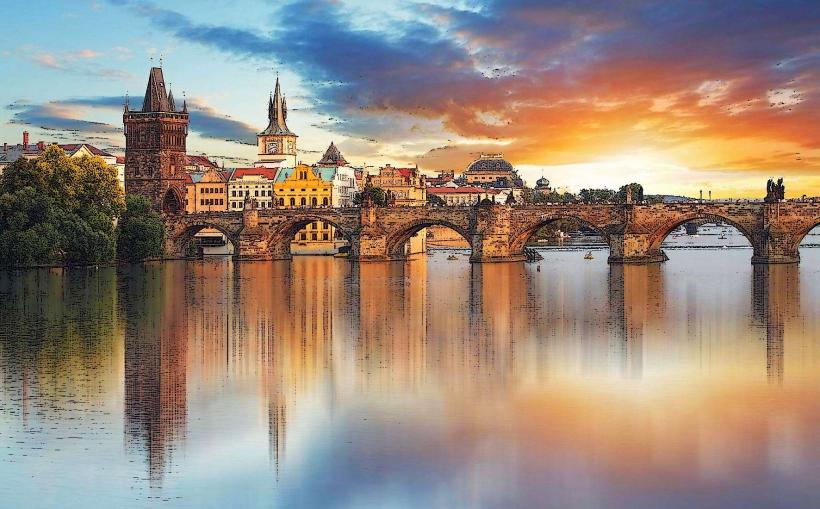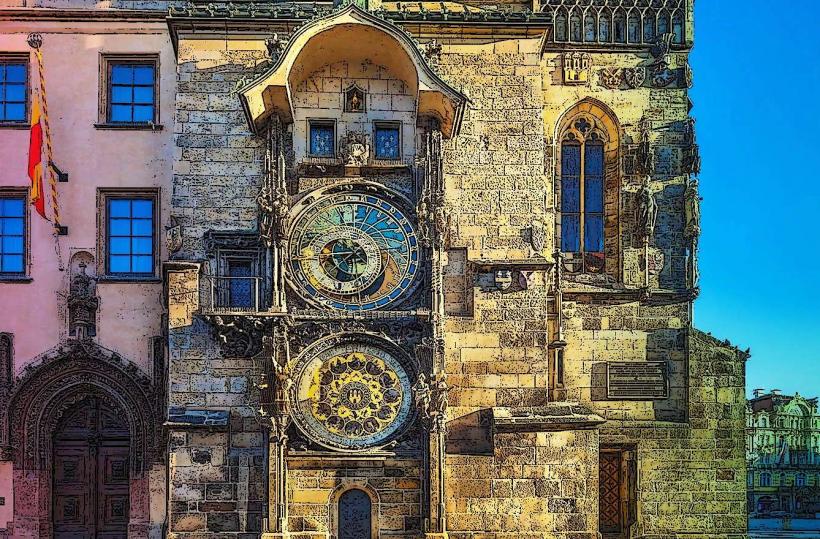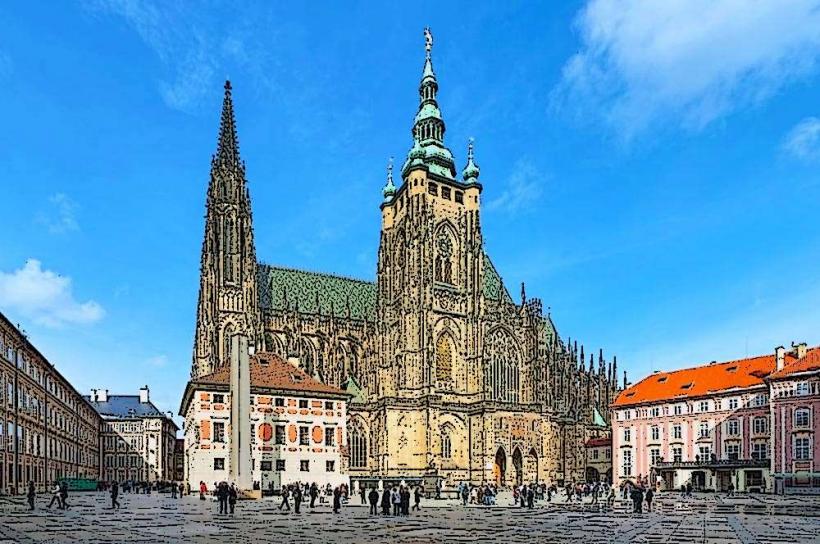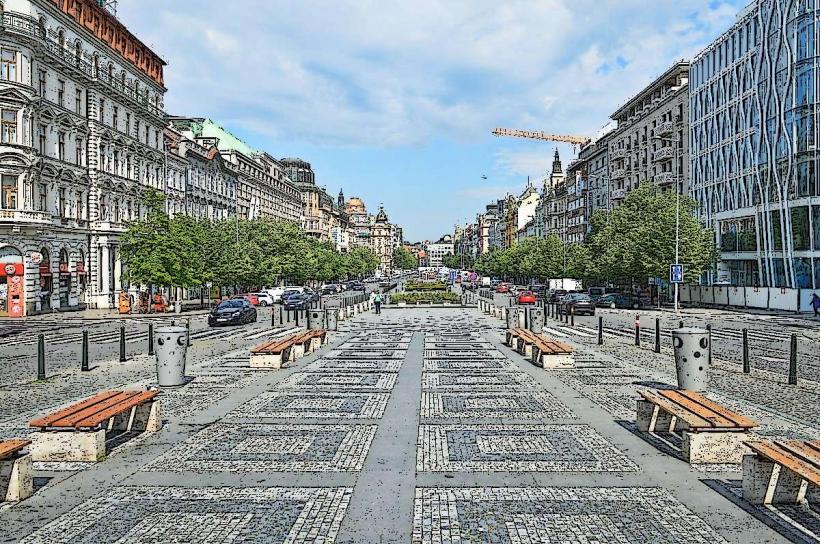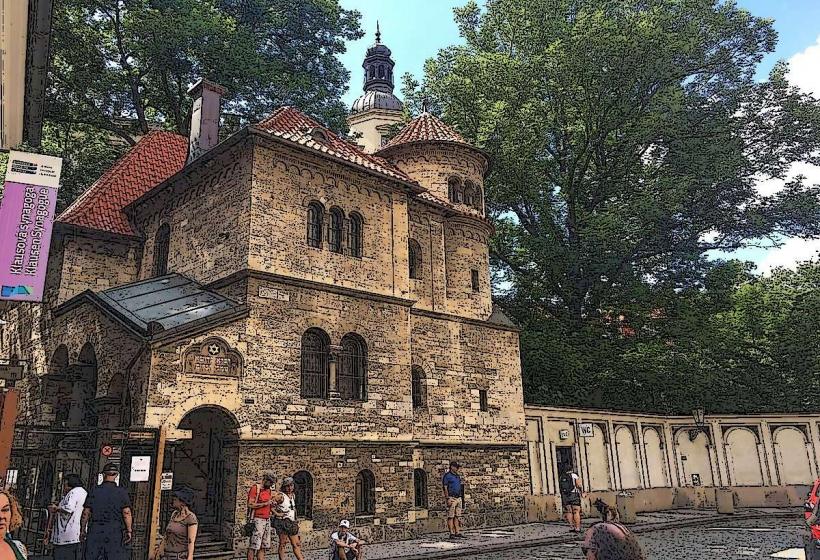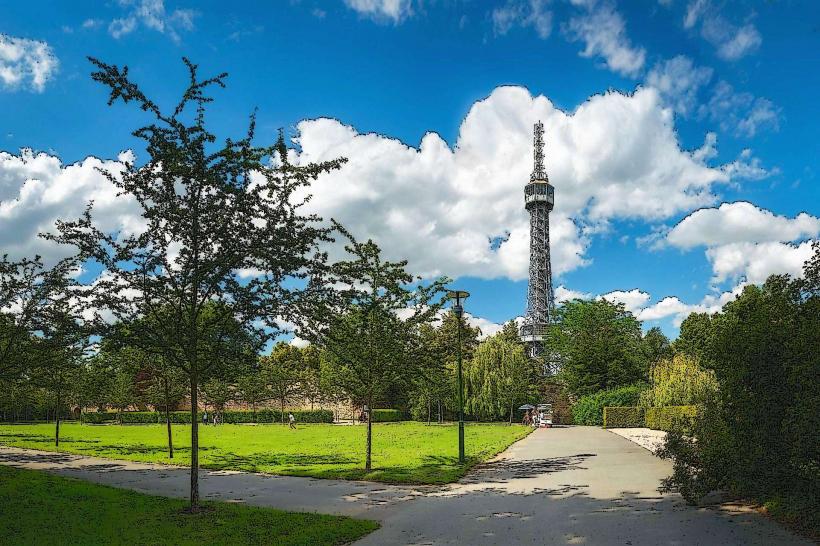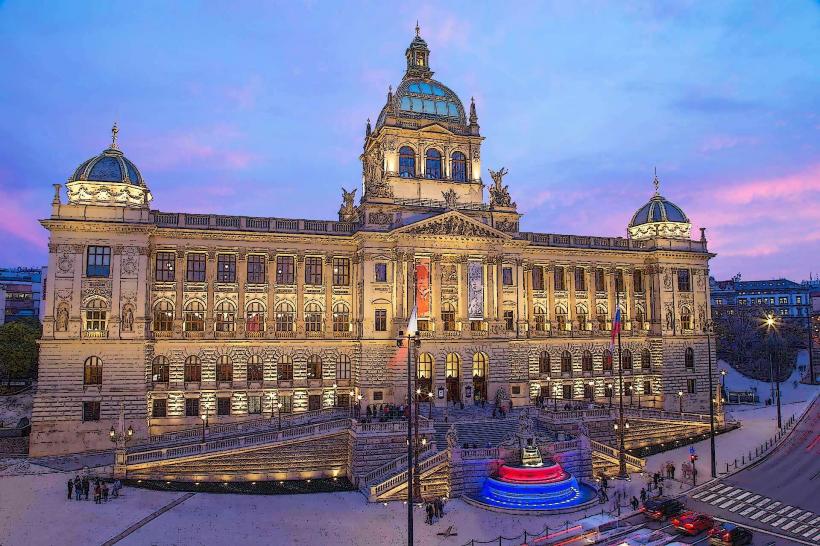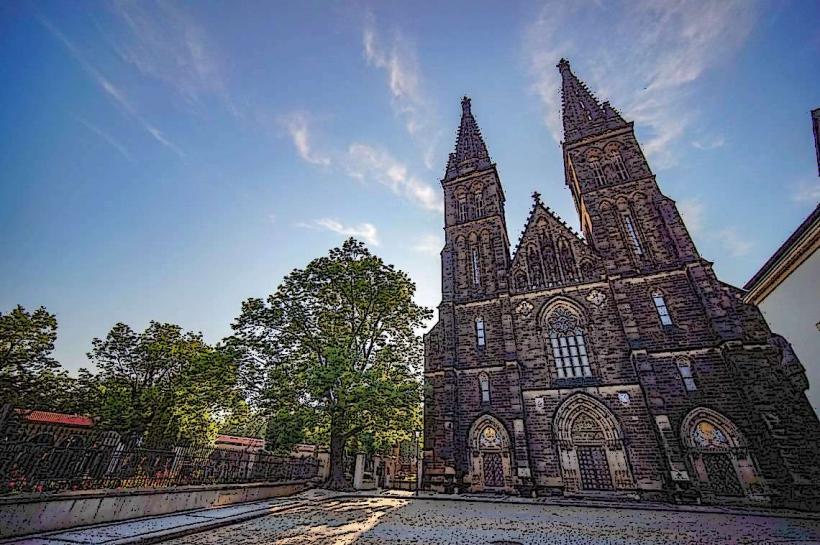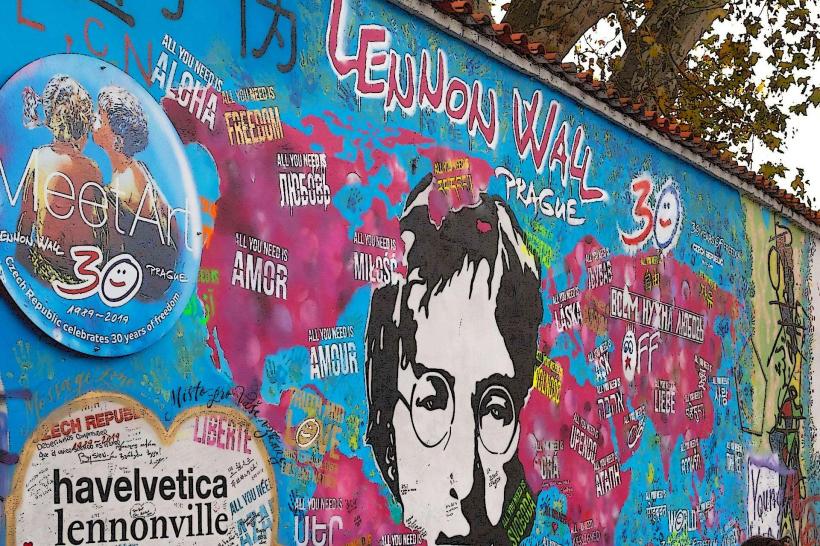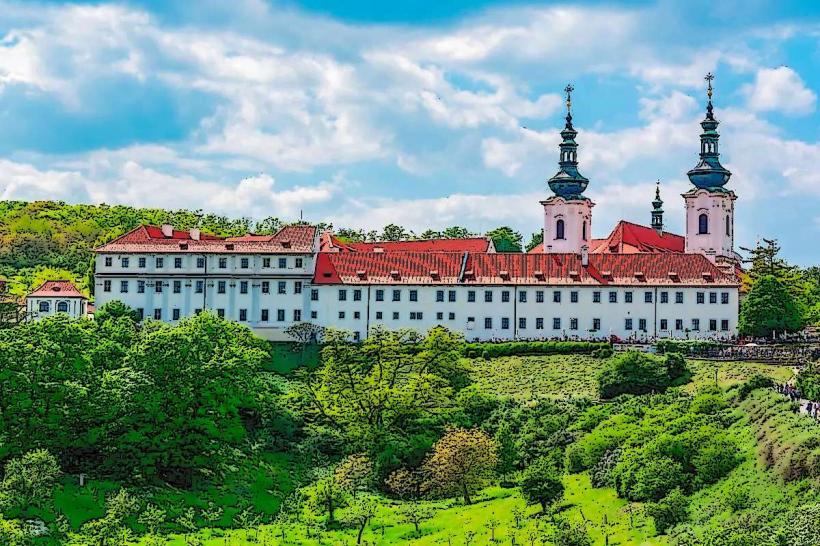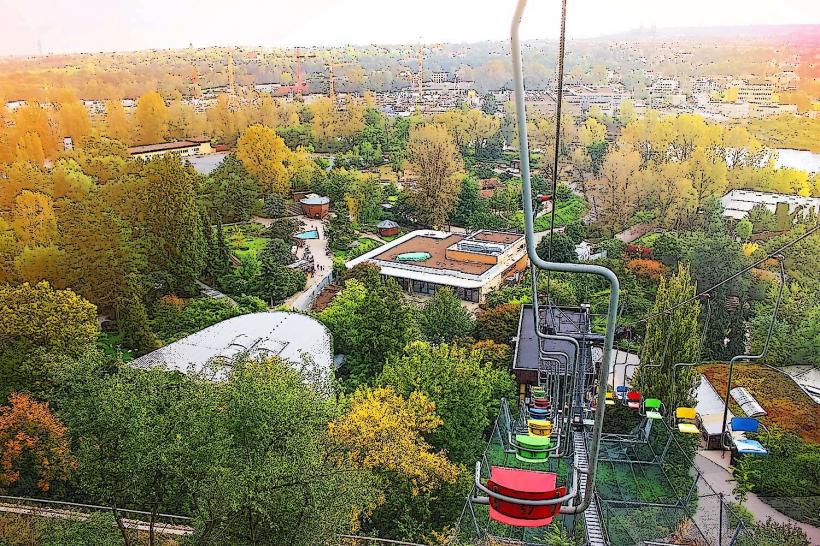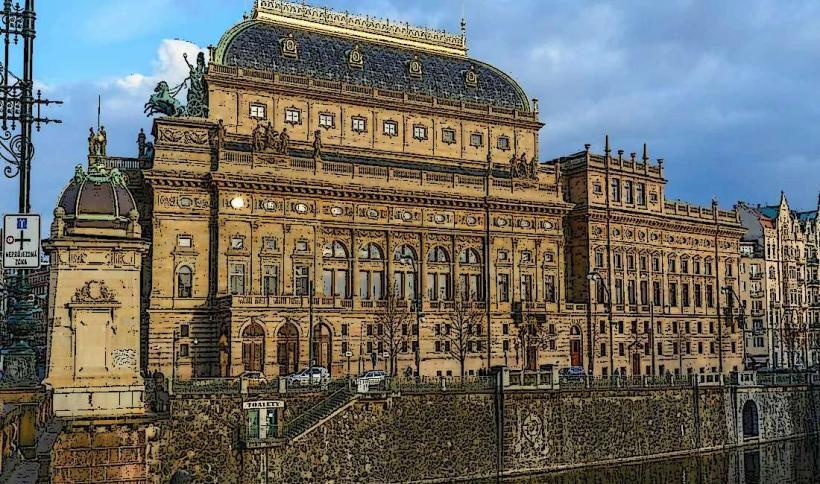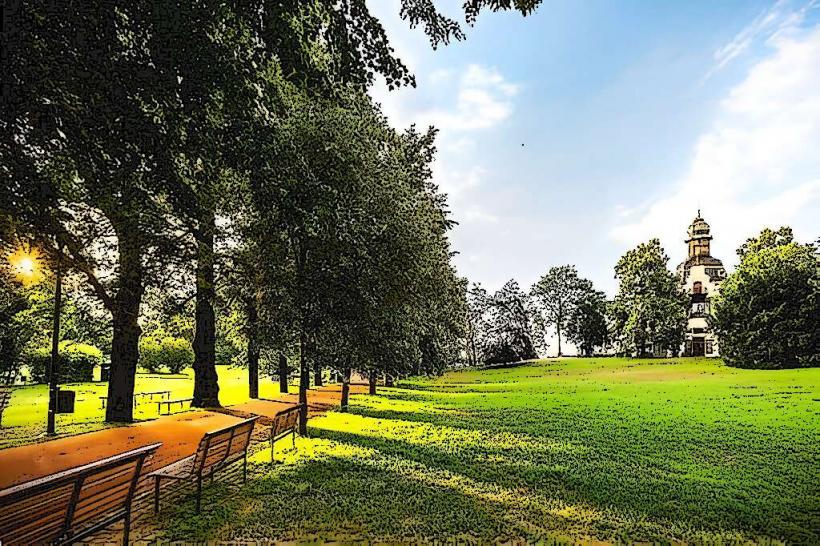Information
Landmark: Dancing HouseCity: Prague
Country: Czech Republic
Continent: Europe
Dancing House (Tančící dům) – Detailed Overview
The Dancing House (Czech: Tančící dům) is one of the most iconic and contemporary architectural landmarks in Prague. This modern building, located on the Vltava River, near the National Theatre, is famous for its distinctive, unconventional design that seems to "dance" when viewed from certain angles. Often referred to as the "Fred and Ginger" building due to its resemblance to a dancing couple, the Dancing House is a symbol of Prague’s evolving architectural landscape, blending modernism with the city’s historic surroundings.
Architectural Design and Concept
The Dancing House was designed by Czech architect Vlado Milunić in collaboration with the American architect Frank Gehry, whose works are known for their innovative and deconstructivist styles.
Design Inspiration: The building’s design was inspired by the movement of Fred Astaire and Ginger Rogers, the famous dance duo from Hollywood’s Golden Age. The two figures of the couple are represented by the curved and angular parts of the building, where one part resembles the male figure (Fred Astaire) and the other, the female (Ginger Rogers). The undulating, flowing shape of the building gives it a sense of movement, hence the name "Dancing House."
Unconventional Form: The building consists of two primary elements:
- Fred Astaire: The curved, glass-enclosed section on the left of the building is designed to resemble the flowing movement of a woman’s dress. The organic form stands in stark contrast to the rigid, rectangular architecture typical of Prague’s historic buildings.
- Ginger Rogers: The opposite part of the structure is more angular, representing the male figure. It is made of concrete, and its sharp angles provide a counterpoint to the fluid design of the other section.
Construction and Controversy
The Dancing House was built between 1992 and 1996. It was a highly controversial project, as it was situated in the historic center of Prague, an area dominated by Baroque, Gothic, and Renaissance architecture. The juxtaposition of this modern, deconstructivist building with the city’s traditional structures raised concerns among many Prague residents and critics.
Architectural Debate: The unconventional design was initially met with skepticism. Many saw it as an architectural intrusion into Prague’s historic center, and some even considered it a visual insult to the city’s ancient aesthetic. However, over time, the building became accepted as an icon of modern architecture and one of Prague’s most recognized and celebrated landmarks.
Construction Team: The building was developed by Vlado Milunić, who was inspired by his vision of creating a modern symbol for the city after the fall of communism in 1989. Frank Gehry, known for his iconoclastic architectural style, contributed the dynamic deconstructivist elements that distinguish the building.
Architectural Features
Glass Facade: The building’s distinctive glass façade gives it a dynamic appearance. The curved section, in particular, creates the illusion of fluidity and movement, resembling the soft, elegant motion of a dancer.
Steel and Concrete: The other side of the building, the "Ginger Rogers" portion, is composed of concrete and steel, featuring sharp angles and crisscrossing lines. The contrast between these two parts creates an interesting dynamic, symbolizing the harmony between the two dancers.
Dynamic Movement: The design was meant to represent the idea of movement in an otherwise static urban environment. From different perspectives, the building appears to be in motion, making it appear as if it is truly "dancing."
Top Design Element: The top of the Dancing House is topped with a glass dome, designed as a "hat" or a "crown", giving it an additional unique feature that makes it even more distinguishable within the Prague skyline.
Function of the Building
Mixed-Use Complex: The Dancing House is a mixed-use building, housing both office spaces and residential apartments. The ground floor includes a café and restaurant, offering views of the Vltava River and the Prague Castle from the rooftop terrace.
Offices and Cultural Center: While the lower floors host offices, the upper floors contain several residential apartments. The building is also home to the Ginger & Fred Restaurant, a popular spot offering Czech and international cuisine with panoramic views.
Public Accessibility: The Dancing House is open to visitors, who can access the restaurant and enjoy the panoramic views of the city from the rooftop terrace. It is also an architectural attraction for tourists interested in Prague's contemporary architecture.
Symbol of Modern Prague
The Dancing House represents Prague’s transformation after the fall of communism, as the city rapidly embraced modernity while still preserving its historical character. The building, standing in the midst of Prague’s historic quarter, symbolizes the balance between tradition and innovation.
Cultural Significance: The Dancing House has become a symbol of Czech freedom and modernization following the end of the Communist era. It stands as a bold, artistic statement that the city is open to new ideas and architectural experimentation.
Tourist Attraction: As one of the most recognizable buildings in Prague, it attracts visitors from around the world, offering a striking contrast to the city’s more traditional sites like Prague Castle and Charles Bridge. The Dancing House is often photographed, both for its innovative design and its position alongside the beautiful Vltava River.
Interesting Facts
Nickname: The building is commonly known as the "Fred and Ginger Building," named after the famous dancing duo Fred Astaire and Ginger Rogers, due to its resemblance to them in motion.
Architect Frank Gehry: Although Frank Gehry is famous for other groundbreaking buildings like the Guggenheim Museum in Bilbao, the Dancing House is one of his few works in Central Europe. The building’s design, which was radical for the time, has since been praised as a work of artistic innovation.
Cultural Impact: Over the years, the Dancing House has featured in many art exhibits, photographic collections, and film projects as an emblem of contemporary Czech architecture.
Conclusion
The Dancing House is a masterpiece of modern architecture that stands as a striking symbol of Prague’s shift toward new, globalized architectural trends in the post-communist era. While controversial at first, it has since become one of the city’s most beloved landmarks. With its dynamic design, blending flowing curves and sharp angles, the Dancing House is a symbol of movement, art, and the intersection of modern and historic Prague. For visitors to Prague, a visit to this unique building is an opportunity to witness firsthand the city’s rich cultural history while embracing its contemporary architectural innovations.

